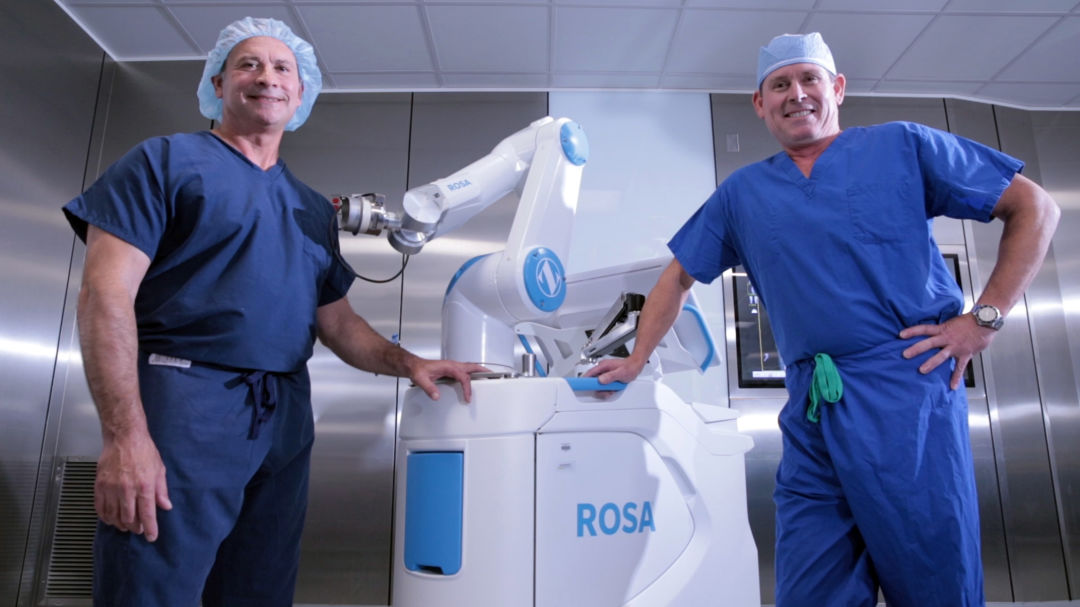New Robot Aids in Knee Replacements

Image: Shutterstock
Mary Longo endured four years of worsening knee pain—unable to go on her daily four-mile walks, and unable to kayak with her husband because she had virtually no range of motion. “I was walking without bending my knee,” she says. “I hardly ever sat down because I couldn’t get the knee bent. I’d get up every commercial break to walk around.”
A longtime snowbird, Longo, 73, finally decided last summer that she’d had enough. “Two days after we came back [to Sarasota], I said, ‘I’m ready,’” she says. She underwent total knee-replacement surgery on Sept. 25, becoming one of the first patients whose surgery was aided by Sarasota Memorial Hospital’s new ROSA knee-replacement robot.
In today’s medical landscape, orthopedic surgeons have knee-replacement surgery down to a science. Still, “anything we can do to improve outcomes, that’s what we want to do,” says Dr. Sean R. Dingle, who performed about 750 joint-replacement surgeries last year, including Longo’s.

Drs. Sean Dingle and Edward Solarski with the ROSA.
Image: Courtesy Photo
ROSA, which stands for Robotic Surgical Assistant, is a computer-aided robotic arm that acts like a navigation system, guiding surgeons in the precise placement of the components used in total knee-replacement surgery. If the joint isn’t aligned properly—even just off by a degree or two—it won’t function properly and may wear down faster or even require additional surgery.
With traditional knee-replacement surgery, only about 4 percent of patients experience improper alignment. Still, nearly 1 million people undergo knee-replacement surgery annually in the U.S., which means at least 40,000 patients could experience a better outcome.
Using 3D imaging and real-time intraoperative data, ROSA allows for improved accuracy and alignment, further reducing the number of failed replacements. The robot simply acts as an assistant while the surgeons still to do the actual procedure.
Dingle and his partner, Dr. Edward Solarski, together perform about 75 percent of SMH’s joint replacements. Upon learning about the ROSA technology, they told hospital leadership that the improved outcomes would be worth the investment. SMH was one of the first hospitals in Florida to acquire the ROSA technology.
“Setting it up takes a little extra time, maybe five or 10 minutes,” says Dingle. “But the more accurate you are, the better you are.”
Longo was up and walking with assistance within a day of the surgery. “My physical therapist works me very hard,” she says with a laugh. By mid-October she only needed a cane when she left the house, “just because of the unlevel surfaces,” she says.
“I’m looking forward to getting back to my four-mile walk. Some days, I’ll do it twice a day.”



